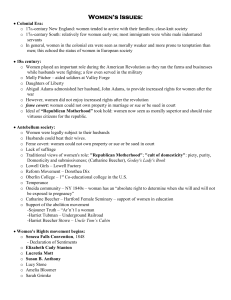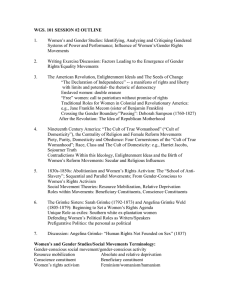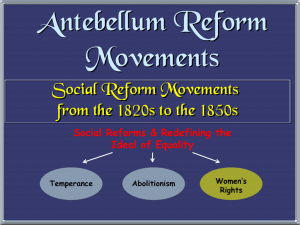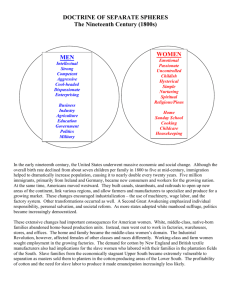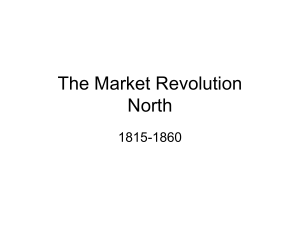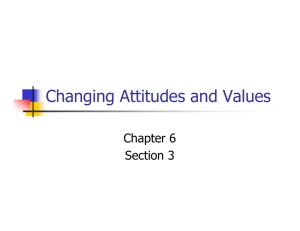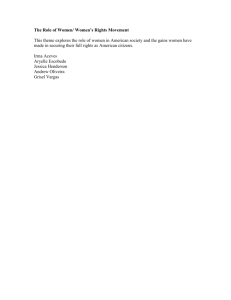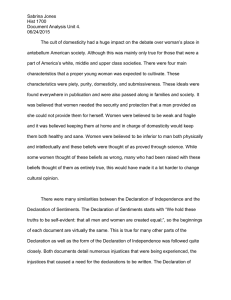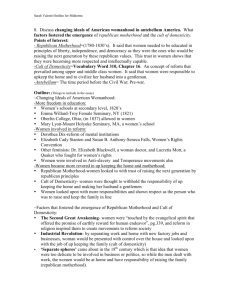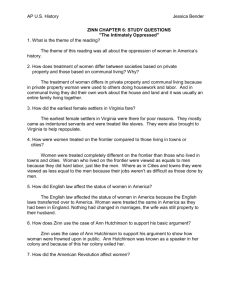Feminine Mystique
advertisement
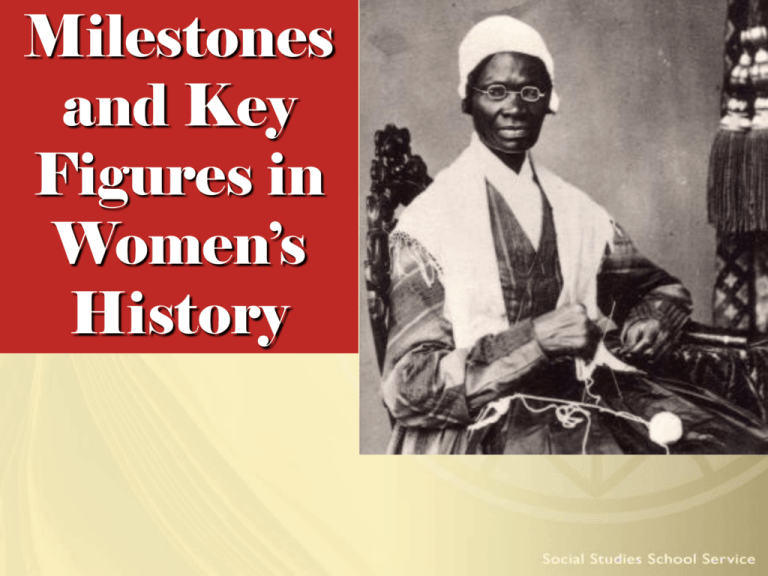
Milestones and Key Figures in Women’s History Life in Colonial America • Anne Hutchinson • Legal status of colonial women – Lost property rights when they married – No separate legal identity apart from their husbands – Single women and widows did have legal right to own property • Chesapeake Colonies – Due to the scarcity of women, their status was elevated – “widowarchy” The Early Republic, 1789-1815 • Abigail Adams – Early proponent of women’s rights – “remember the ladies” • Cult of domesticity/republican motherhood – Cult: the idealization of women in their roles as wives and mothers – Rep: responsibility of women to raise children to be virtuous citizens – Throughout history, women have supported the cult of domesticity (Catharine Beecher, Phyllis Schlafley) Women in Antebellum America, 1815-1860 • Lowell System – 1820’s to 1830’s – Irish immigrants began to replace them leading up to the Civil War • Seneca Falls Convention – Elizabeth Cady Stanton and Lucretia Mott – Called for suffrage, property rights, and educational opportunities – “Declaration of Sentiments” Women in Antebellum America, 1815-1860 • Characteristics of Women’s Movement in the Antebellum Period – Middle class women – Broad-based platform – Close links to temperance and abolition movements – Strongest in Northeast and Midwest, not south • Sarah Moore Grimke – One of the first women to publicly support abolition and women’s suffrage – Grimke quote: “I ask no favors for my sex. I surrender not our claim to equality. All I ask of our brethren is that they will take their feet off our necks.” Reformers and Suffragettes, 1865-1920 • Jane Addams – Hull House – Settlement house movement • Centers of women’s activism and reform efforts for the urban poor • Taught classes on cooking and dressmaking, published reports on deplorable housing conditions, literacy and language classes for immigrants, and day nurseries for working mothers • The Fight for Suffrage – Frontier west tended to promote equality – Wyoming (1869) first state to grant women full right to vote – 19th Amendment Reformers and Suffragettes, 1865-1920 • Women’s Christian Temperance Union – Carrie Nation – Moral responsibility to improve society • Women and progressive reforms – Dorothea Dix – Ida B. Wells Barnett – Women were actively involved in Progressive reforms associated with the passage of child labor laws at the state level and campaigns to limit working hours of women and children • Reformers and Suffragettes, 1865-1920 • Women and the workplace – Late 19th century, majority of workforce young and unmarried – Most likely to work as domestic servants, garment workers, teachers, cigar makers – Least likely to work as physicians and lawyers Boom and Bust, 1920-1940 • Flappers – Symbolized new freedom for women by challenging traditional attitudes • Women and the workforce – % of single women in the labor force declined in the 1920’s – Did not receive equal pay and continued to face discrimination – Most married women did not seek work outside of the home Boom and Bust, 1920-1940 • Margaret Sanger – Birth control for women • Decline of the feminist movement – 19th amendment, changing morals and manners symbolized by flappers, disagreements concerning goals, decline of Progressive Era • Alice Paul – ERA • Eleanor Roosevelt – Most active first lady in US history Women and the Workplace, 1941-1960 • World War II – Widespread movement of women into factory work – Married women – “Rosie the Riveter” • 1950’s – Women were encouraged to give up their factory jobs and return home (cult of domesticity returns) Modern Women’s Rights Movement • Betty Friedan – Feminine Mystique – First president of NOW • Organization founded to challenge sex discrimination in the workplace – Feminism tended to be a middle-class movement – Betty Friedan known for her criticism of traditional gender roles Modern Women’s Rights Movement • ERA – Did not pass despite efforts throughout the 1960’s and 1970’s – Phyllis Schlafly led a campaign to block ratification of the Equal Rights Amendment (cult of domesticity) • Female vice-presidential candidates – Geraldine Ferraro – Sarah Palin
